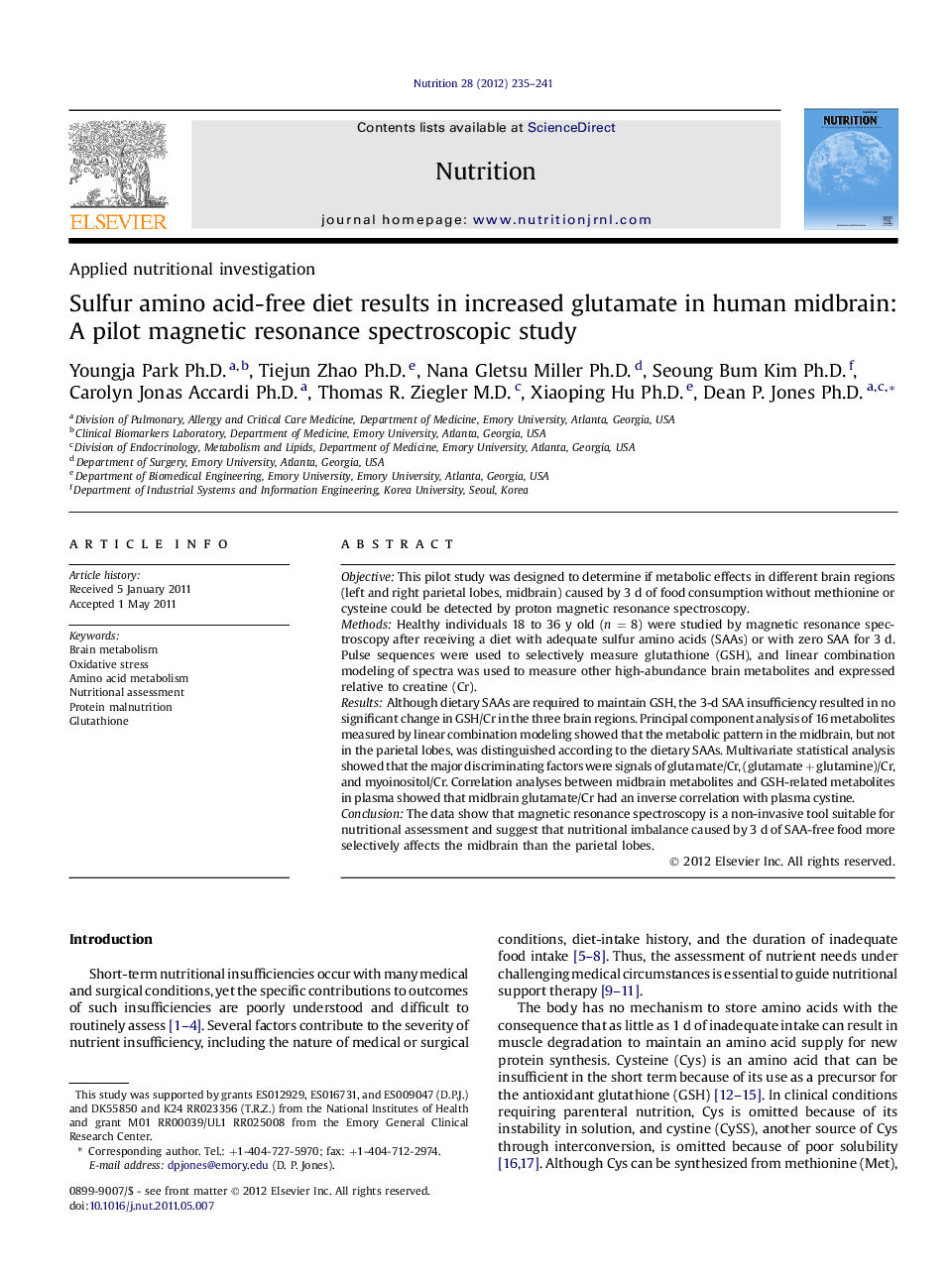| Article ID | Journal | Published Year | Pages | File Type |
|---|---|---|---|---|
| 6090445 | Nutrition | 2012 | 7 Pages |
ObjectiveThis pilot study was designed to determine if metabolic effects in different brain regions (left and right parietal lobes, midbrain) caused by 3 d of food consumption without methionine or cysteine could be detected by proton magnetic resonance spectroscopy.MethodsHealthy individuals 18 to 36 y old (n = 8) were studied by magnetic resonance spectroscopy after receiving a diet with adequate sulfur amino acids (SAAs) or with zero SAA for 3 d. Pulse sequences were used to selectively measure glutathione (GSH), and linear combination modeling of spectra was used to measure other high-abundance brain metabolites and expressed relative to creatine (Cr).ResultsAlthough dietary SAAs are required to maintain GSH, the 3-d SAA insufficiency resulted in no significant change in GSH/Cr in the three brain regions. Principal component analysis of 16 metabolites measured by linear combination modeling showed that the metabolic pattern in the midbrain, but not in the parietal lobes, was distinguished according to the dietary SAAs. Multivariate statistical analysis showed that the major discriminating factors were signals of glutamate/Cr, (glutamate + glutamine)/Cr, and myoinositol/Cr. Correlation analyses between midbrain metabolites and GSH-related metabolites in plasma showed that midbrain glutamate/Cr had an inverse correlation with plasma cystine.ConclusionThe data show that magnetic resonance spectroscopy is a non-invasive tool suitable for nutritional assessment and suggest that nutritional imbalance caused by 3 d of SAA-free food more selectively affects the midbrain than the parietal lobes.
